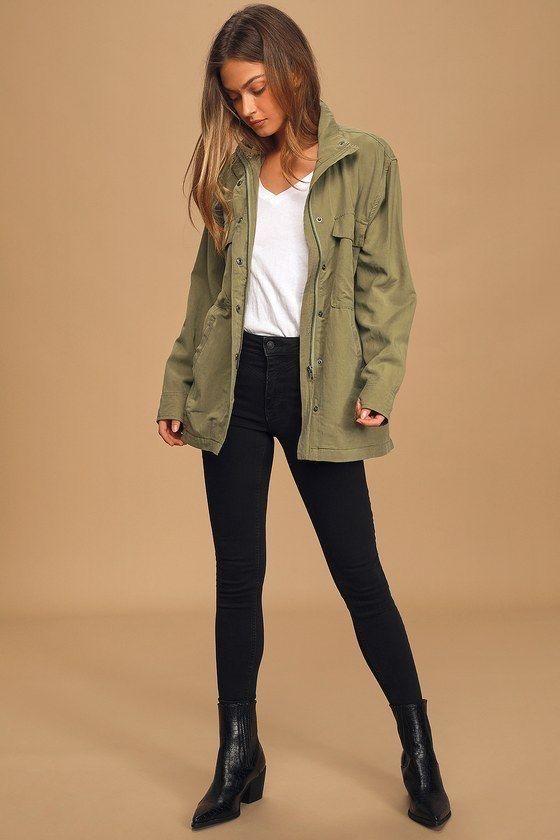Nothing rivals the sensation of waking up on a chilly morning, curled up in your blankets and sipping a cup of hot cocoa. After a while of pure bliss, it’s time to get back to work. So, what kind of clothing will keep you warm throughout the day on a cool day? Of course, those that keep you comfy and cozy.
When shopping for cold-weather clothing, we often see the phrase “made of organic fabric” on the tag. Have you ever been curious about organic fabric?
Well, if you haven’t heard of organic fabric before, here’s an article to help you understand what it is:
Table of Contents
What Is Organic Fabric?

Organic farming is the cleanest and most environmentally sustainable kind of farming. Plants in organic farming are cultivated without using any chemical substitutes or pesticides, resulting in healthier and high-quality crops. Needless to say, organic fabrics are grown in this manner.
Organic cotton is the best example to explain the term when it comes to organic fabric. Organic cotton is grown on fertile soil from organic seeds. These plants are well cared for without potentially hazardous chemical pesticides. Instead of pesticides, harmless bugs are utilized. Organic cotton also requires only the necessary amount of water.
There is also another variety of cotton known as conventional or regular cotton. These cotton plants do not necessitate the same level of care as organic cotton. Harmful pesticides and an excessive amount of water are used, compromising the soil quality as well as the cotton quality. Unlike organic cotton, which is rotated from one soil to the next, regular cotton is grown on the same soil until the soil loses nutrients and is no longer capable of growing crops.
Other organic fabrics include wool, linen, hemp, and silk. Organic wool is derived from sheep that are raised in accordance with organic standards. Organic silk is obtained in such a way that it does not hurt the silkworms.
Organic Fabric vs Normal Fabric

We now understand the distinction between organic and conventional fabrics. So, which is more well-liked and preferred? Organic fabric, of course. Let’s take a closer look at why the organic fabric is favored over the regular fabric.
We already know that organic fabric is grown in natural, environmentally favorable ways. Let us use organic cotton as an example to demonstrate the differences between the organic and regular fabric.
Fiber Quality
The quality of the material in the textile business is influenced by the quality of the fabric’s fibers, and the harvesting methods have a substantial impact on the material’s quality. Cotton can be harvested in one of two ways: hand-picked or machine-picked.
Organic cotton is, without a doubt, hand-picked. The quality of organic cotton is preserved by employing a safer and gentler harvesting method. On the other hand, regular cotton crops that are cultivated in large quantities necessitate bulk harvesting by machinery. Machine picking reduces not only the time but also the quality of the fabric.
Farming Methods
Regular cotton is grown from genetically modified seeds (GMO), which protect the plants from insects. Farmers employ bulk amounts of pesticides for extra protection, and fertilizers are added to speed up the growth. The addition of chemicals degrades cotton quality and may induce allergic reactions in people who wear regular cotton clothing.
Organic cotton is grown in the most organic and natural way possible, without the use of artificial fertilizers or pesticides. Not only that, the plants are planted in different soils every time, thus retaining the soil’s quality.
The Process of Weeding
Weeding is a crucial and inevitable part of agriculture. Usually, the weeding process is done with specialized machines or chemicals but the process is done manually in organic cotton farming, with farmers pulling off undesirable plants with their hands.
Manual weeding is time-consuming, but it ensures the quality of the cotton fibers.
As you may have figured, regular cotton cultivation involves the use of carcinogenic herbicides and other chemicals, which work in tandem with pesticides to degrade both the quality and the environment surrounding the soil.
Process of Manufacturing
Cotton is harvested and then delivered to various factories. It is first sent to a factory where cotton balls are sorted from seed pods and cleansed of dirt. Following that, it is delivered to a facility that converts the extracted cotton into fabric. The fabric is then delivered to a dyeing factory, where organic dyes are used to dye it. Finally, the dyed fabrics are sent to garment factories to be manufactured into ready-to-wear clothing.
For organic cotton, environmentally friendly dyes and cleaning agents are used to clean and manufacture the finished cotton fabric.
Regular cotton, also known as dirty cotton, is heavily subjected to synthetic, chemical dyes and cleaning agents that can be detrimental to the skin.
Based on the differences, you may very well realize why organic cotton is given great preference in the market.
Is Organic Fabric Expensive?

Organic fabric necessitates rigorous maintenance and production, so it’s no surprise that it is expensive. But what causes its hefty maintenance costs?
Organic cotton is a high-cost, low-yielding crop. The meticulous maintenance adds to the already unfortunate situation. From planting to growing to harvesting, phew, each stage demands cautious attention; otherwise, the quality of the plants will deteriorate.
When it comes to growing organic cotton, non-GMO or organic seeds are used, which are rare and more expensive than GMO seeds.
These factors have a significant impact on the pricing of organic fabric. Not to mention the textile industry’s demand for organic fabric. Organic fabrics are renowned for their genuine softness and fineness; these traits are unique and impossible to achieve with synthetic fabrics, which explains why they are so popular. To maintain their quality, luxury brands prefer to manufacture their clothes out of organic fabric rather than synthetic fabric.
However, not all cotton or silk clothing is manufactured from organic materials. Make sure to check the tag to see if the shirt or coat is made from organic fabric. Clothes made from organic fabric usually have a certified symbol on their label, proving their quality.
How Is Organic Fabric Produced?

Organic fabrics are expensive due to their rigorous manufacturing procedures. Let’s have a look at the detailed production procedures of organic cotton to gain a better idea of how organic fabrics are meticulously produced and manufactured.
Growing
The cultivating and harvesting process is undoubtedly the first stage. Organic cotton seeds of excellent caliber are purchased and sown in a well-prepared field. Since organic cotton is grown without fertilizers or pesticides, natural composts are used instead of synthetic fertilizers.
Farmers employ plenty of other workers to preserve the cotton corps. After fully matured, the cotton is hand-picked and sent to the factory.
Ginning
The cotton balls are ginned into fibers during the ginning process.
The cotton balls are sent into the ginning machine, which removes the seedpods from the cotton in this process. Cotton is stripped of its seeds, as well as any extraneous dirt, stems, leaves, and linters. After multiple cleaning and separation processes, the ultimate product, lint cotton, is isolated and prepared for the next procedure.
Seeds and linters are among the various residues that are turned into other products. Cotton seeds are used to make cottonseed oil, while cotton linters are used to make paper and plastic.
The Cotton Spinning Process
Following the separation of lint cotton, the process of turning it into yarn begins. The cotton is fed into a carding machine, separating the fibers and turning them into yarn for weaving and knitting. Cotton fibers are subjected to heavy washing during this process.
Cotton fibers are spun into yarn, then woven or knitted into cloth. Each factory has a group of professionals assigned to knitting and weaving the fibers. Finally, the fabric is delivered to dyeing factories.
Dyeing Cotton
Perhaps one of the most difficult processes in the development of organic cotton is dyeing.
Chemical dyes are commonly used in most enterprises. Large volumes of water are wasted during the dyeing process. The rest of the water is usually discharged into neighboring rivers or lakes. People and animals living near water sources are more likely to experience the toxic mixture’s ill effects since most dyes are made of harmful chemicals.
Because organic fabric production must adhere to strict organic guidelines, companies employ non-toxic organic dyes instead of harmful dyes. These pigments are made from natural ingredients such as onion and turmeric.
The fabric is then shipped to a garment factory once it has been dyed.
Final Process
In the garment factory, the workers and designers collaborate together to measure, cut, and sew the fabric into the perfect clothing.
How Will Organic Fabric Benefit the Environment?

The term “organic farming” emphasizes both the technique and the benefits of the farming method. Organically grown plants and food are of high quality, nutritious, and safe to use and consume.
Organic fabrics are, without a doubt, the best alternative to regular fabrics in basically every way. Let’s have a look at the benefits of organic fabric before we wrap up this article:
Organic Fabric Is Eco-Friendly
Before the advent of synthetic fabrics, clothes made of organic fabrics were a way of living. Nowadays, people are becoming more environmentally conscious, and the majority of them prefer to wear clothing made of organic materials.
It is safe to say, that organic farming is environmentally friendly since it avoids the use of chemical fertilizers and pesticides.
Not to mention that organic cotton requires little water and that the absence of carcinogens helps to preserve soil quality.
The use of fertilizers and pesticides not only deteriorates soil quality but also poses a risk to those who use them and those who live nearby. Organic farming is the way forward for a brighter future, and purchasing organic fabric is one way to increase demand so that more farmers revert to organic farming.
Clothes Are Soft To Wear
Apparel made from organic fabric is soft to wear. Not only the softness but the quality of the fabric is also reinforced by the quality of the organic fabric. Aside from being soft, organic fabric is also lighter in weight. Clothing made of organic fiber is the ready pick on days when you feel like wearing less.
In the textile industry, the demand for garments made from organic fabrics continues unabated.
Cheaper Production
Although the seeds are not cheap, the entire procedure of caring for the crops is.
Farmers employ natural composts, which are less expensive, instead of toxic carcinogens. Also, if you are not using chemicals, you will not need space to store them, so you can save money by not acquiring additional storage.
Avoid Allergies
Organic fabric is the finest choice in the production of clothing apparel. There is a substantial risk of developing fatal allergies if the fabric has been treated with pesticides and chemical fertilizers.
Since organic fabrics are not exposed to toxic chemicals, we safely assume they are safe to wear.
Safe for Farmers
Most farmers who use chemical substitutes in their farming reportedly have suffered from health and skin issues due to the toxic substances. Not only to the farmers, but pesticides also tend to ruin the quality of the soil too, making the soil completely unusable.
Organic farming is the safer alternative for both farmers and nature.
Conclusion
Throughout this article, we learned what organic fabrics are, their production methods, benefits, and many more. Amidst the growing concerns of global warming, wearing clothes made from organic fabric is one way to protect the planet from future destruction.
Speaking of clothes, Fangyuan has a collection of apparel made from organic fabric. Why not have a try?
